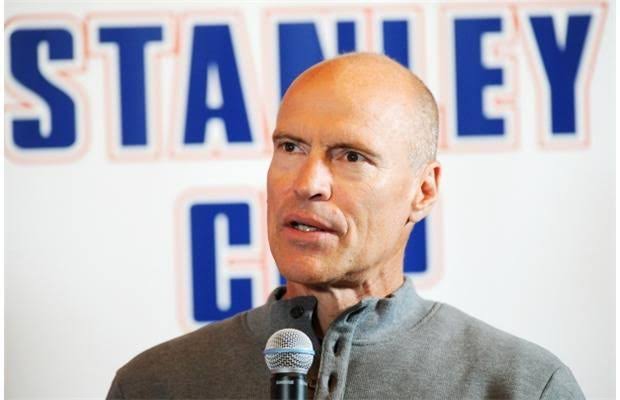The Blue & Orange Legacy: A \$1.4 Billion Gift That Changed the North
Edmonton had always loved its Oilers. From the dynasty days of the 1980s to the thrilling playoff runs of recent years, the city lived and breathed hockey. The legends of the game—Wayne Gretzky, Mark Messier, Grant Fuhr, Jari Kurri, and Paul Coffey—were not just athletes to Edmontonians; they were mythic figures, almost family.
But no one could have expected what happened on that crisp morning in June 2025.
The doors to Rogers Place swung open not for a game or concert, but for a press conference that would send shockwaves across Canada—and beyond. Word had already leaked that something big was coming. But \$1.4 billion? No one imagined that number. Not even close.
As the lights dimmed and the crowd hushed, the legends walked out together. It had been decades since they’d shared the ice. Now they shared something bigger: a vision.
Wayne Gretzky stepped up to the podium first, his familiar easy smile hiding the gravity of what he was about to say.
“Today, we’re proud to announce the formation of the **Northern Lights Foundation**, a collective effort by past and present members of the Edmonton Oilers organization. Together, we are committing **\$1.4 billion** in support of youth mental health, Indigenous community development, and sustainable infrastructure across Northern Canada.”
The silence broke like a wave into applause, gasps, and even a few sobs. Reporters looked at one another, stunned. Did he say billion?
Yes, he did.
### *A Legacy Beyond the Rink*
For years, the former Oilers had talked about doing something special. Not just a one-off donation, or a ceremonial charity skate—but something that would resonate through generations. What started as an idea during a private dinner in Jasper became a movement.
Mark Messier, the emotional core of the old Oilers team, described how the idea was born.
“We were talking about the communities we came from—how hockey gave us a chance, a direction. But we also talked about the kids who don’t get that chance. Especially in northern and remote areas. The struggles with access to care, clean water, education, opportunity—it’s not right. We realized we had the power to change that. So we did.”
The group pooled resources from private investments, endorsements, corporate partners, and charitable foundations. Wayne Gretzky contributed the lion’s share—rumors later pegged it at over \$400 million—while others like Messier, Fuhr, Kurri, and Coffey committed substantial personal wealth and brought in major business allies.
In just 18 months, they had quietly assembled one of the largest athlete-driven philanthropic initiatives in Canadian history.
### *Where the Money Will Go*
The \$1.4 billion would be distributed across several pillars:
* **\$500 million** toward **mental health care and youth wellness hubs** in northern Alberta, Saskatchewan, Manitoba, and the territories. Each hub would offer counseling, telehealth access, sports programming, and cultural mentorship.
* **\$400 million** toward **clean water and housing infrastructure** in Indigenous communities, particularly those still affected by boil water advisories or housing shortages.
* **\$300 million** for **education and scholarship programs**, aimed at training Indigenous educators, nurses, and engineers to work in their home regions.
* **\$150 million** for building **sustainable sports facilities**—solar-powered rinks, youth arenas, and multi-sport community centres in remote towns.
* The remaining **\$50 million** would create the **Oilers Legacy Fellowship**, a leadership program combining hockey development with civic engagement, open to young Canadians across the country.
“This is about hockey, yes,” said Fuhr, whose own story of overcoming barriers as a young Black goaltender inspired many. “But it’s more about community. Hockey taught us how to work together, how to dream big. This is our chance to give that gift to every kid north of the 49th.”
### *Canada Responds*
Within hours, tributes poured in.
Prime Minister Emilie Rousseau called it “a defining act of patriotism and compassion.”
NHL Commissioner Gary Bettman said it set “a new gold standard for what sports legends can do with their legacy.”
Perhaps most powerful were the voices from the North.
Chief Nathaniel Redsky of the Cree Nation of Wabasca called into a local Edmonton radio station with tears in his voice. “We’ve been waiting decades for someone to care at this scale. For our youth to see their heroes reach out, not with words but with action… it means everything.”
By nightfall, downtown Edmonton lit up Rogers Place in Oilers blue and orange. Thousands gathered in the plaza outside, watching video highlights of Oilers history—The Great One’s 50 goals in 39 games, Messier’s steely playoff face, Fuhr’s sprawling glove saves. But this time, the crowd wasn’t cheering for goals.
They were cheering for a new kind of greatness.
### *The Torch Passed*
As the press conference wrapped up, Gretzky left the podium with a final thought:
“We’ve had our moment on the ice. Now it’s time to make a difference off it.”
Later that year, the first mental health center opened in Whitehorse. A young Dene boy, aged 11, who had struggled with anxiety and isolation, became its first visitor. He didn’t say much at first. But when asked why he wanted to go, he held up a hockey card.
Wayne Gretzky, in Oilers blue.
“They care,” the boy whispered.
And in that moment, the true value of the donation wasn’t \$1.4 billion.
It was one more dream, still alive in the North.
